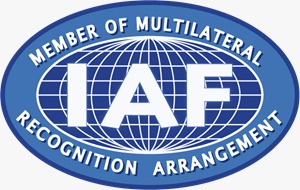Basic Structure of an AL3 file:
AL3 file includes two types of groups:
- Transaction Groups: Carries data related to the transaction between the source and destination
- Data groups: Carries the data of the policy.
Transaction Groups:
1MHG: The Message Header Control Group
This is the first group where the transaction starts indicating the logical start of the message. This group includes the address of the sender and receiver (Agency-Company) of the message along with the message text carrying the instruction of what to follow to receive the message and transaction.
All transactions contained within a message must be for a single message addressee.
2TRG: Transaction Header Group
This group comprises elements that allow the receiver of the transaction to let the transaction to route to their systems, to get introduced with the nature of the transaction so that it could be easily processed within their internal systems and generate the response to sender accordingly.
2TCG: Transaction Control Group
The Transaction Control Group is a Control Group that is a logical extension to the Transaction Header Group. These groups comprise the information of the standards and their respective version numbers that are used in the construction of the transaction.
2GCG: Group Control Group
This group includes the groups that are included in Master File Image but are omitted in particular transactions and could not be deleted from the policy for that transaction to maintain the hierarchy
2ACI: Distribution Partner Information Group
This group contains information of the carrier (C), the agency (A), or the producer/servicing agent/CSR (P)
**A single transaction would be as follows: **
2TRG
2TCG
2GCG optional – multiples are permitted
2TAG optional
2ACI optional repeating as needed
Data Groups: Some of the data groups are as follows:
5BIS: Basic Insured Information Group
Basic Insured Information Group contains information about the person who wants to get insured such as name, phone number, address, etc.
9BIS: Basic Insured Information Extension Group
Basic Insured Information Extension Group is an extension to the Basic Insured Information Group which is used as required.
5BPI: Basic Policy Information Group
This group includes information about the insurance policy comprising policy number, effective and expiration dates, premium, etc. An insured can have multiple policies, but only one policy per transaction is permitted (the policy may, however, be a “package” policy).
SNG: Supplementary Name Group
This group is used, for instance, if there is a requirement for more than one name for the insured such as a ‘doing business as name.
5LAG: Location Address Group
Location Address Group which includes the address at which risks could be found. If there are multiple locations, in that case Sub-Location Group is used to describe subdivisions within a location (if there is more than one) at which the risks are to be found.
5AOI: Additional/Other Interest Group
Additional/Other Interest Group containing the name, address, etc. of persons or parties other than the insured who may have an interest in this policy.
9AOI: Additional/Other Interest Extension Group
Additional/Other Interest Extension Group is an extension to the Additional/Other Interest Group which is used as required including extra information about the additional interest
5RMK: Remarks Group
The Remarks Group is a common element group used to include textual information which supplements a given transaction
5BNG: Binder Notification Group
This group contains information that notifies the receiver of the transaction that a binder has been issued
5CVG: Commercial Lines Coverage Group
A coverage and adjustments group should be created for all coverages applying to a unit at risk which has an impact on the total premium for a policy. The Coverage group can be used to send coverage information for monoline as well as package policies.
3MTG: Message Trailer Group
This group follows the last transaction in a message indicating the end of the message.







Leave A Comment